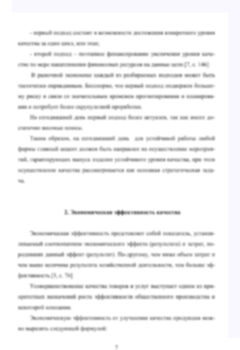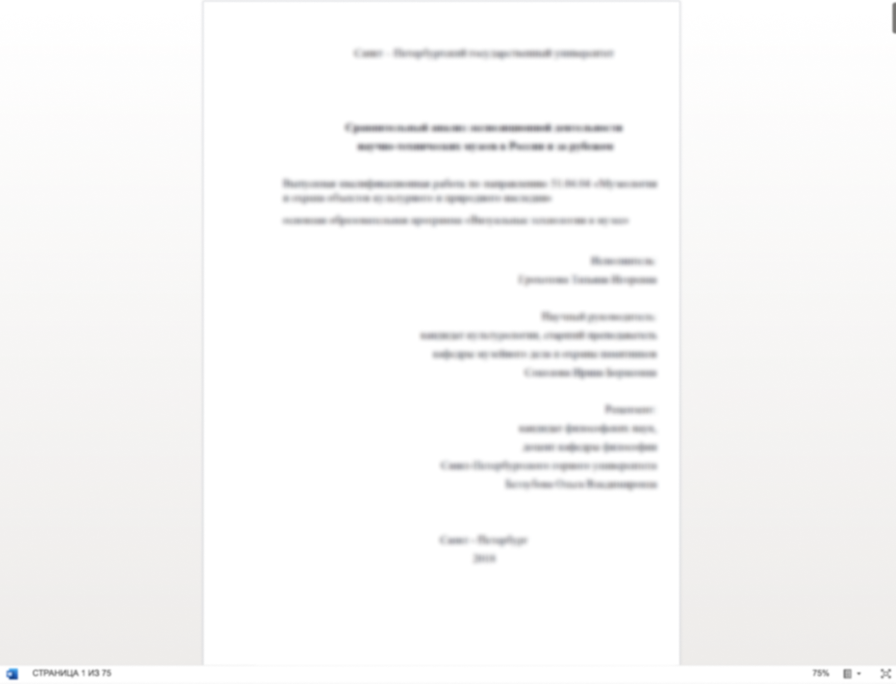
Инвестиционная стратегия на рынках капитала, основанная на мультипликаторах EV: влияние равного взвешивания отраслевых портфелей с низкими мультипликаторами EV на общую доходность и риск
Предметом рассмотрения данной работы является вопрос улучшения показателей риска и доходности инвестиционной стратегии, основанной на мультипликаторах EV и равном взвешивании портфелей по отраслям. В основу работы легли как последние публикации в области стоимостного инвестирования, так и классические теории диверсификации и управления портфеля.
Проведен анализ портфеля на основе выборки акций компаний из S&P 500 с самыми низкими значениями мультипликатора EV в каждой отрасли, при условии равного веса доли каждой отрасли в портфеле. Далее показатели последнего сравниваются с портфелем, состоящим из акций с самыми низкими значениями мультипликатора EV без учета их принадлежности к конкретным отраслям.
На основании показателей риска и доходности, таких, как стандартное отклонение и полуотклонение, R2, бета, периодическая доходность и коэффициент Шарпа, был сделан вывод о существенном превосходстве отраслевой стратегии, при этом, несмотря на более высокую корреляцию с доходностью S&P 500, данная стратегия характеризуется более низким уровнем системного и внесистемного риска.
CHAPTER 1: INTRODUCTION…………………………………………………………………………………..7
1.1 Background of the research …………………………………………………………………………………7
1.2 Potential managerial implications ………………………………………………………………………..8
1.3 Main research question……………………………………………………………………………………….8
1.4 Organisation of the thesis ……………………………………………………………………………………8
CHAPTER 2: THEORETICAL FRAMEWORK …………………………………………………………….9 2.1 Theoretical foundation………………………………………………………………………………………..9
2.1.1 The evolution of value investing ………………………………………………………………………….9
2.1.2 Exploring the enterprise multiple effect and its potential pitfalls ……………………………10
2.1.3 Practical view: factor investing and the enterprise multiple……………………………………13
2.1.4 Portfolio allocation and balancing………………………………………………………………………15
2.2 Limitations of selected theory ……………………………………………………………………………18
2.3 Research gap, selection and justification of theory and formulation of sub-question…18
CHAPTER 3: METHODOLOGY………………………………………………………………………………..20
3.1 Introduction …………………………………………………………………………………………………….20
3.2 Sample choice and retrieval……………………………………………………………………………….20
3.3 Methodological design and justification………………………………………………………………21
3.4 Methodological design of sub-question……………………………………………………………….26
3.5 Portfolio specifications: Size, holding period and time horizon ……………………………..26
3.6 Ethical considerations, biases and robustness testing…………………………………………….28
3.7 Conclusion and interconnection of variables………………………………………………………..29
CHAPTER 4: DATA PRESENTATION AND ANALYSIS……………………………………………31
4.1 Introduction …………………………………………………………………………………………………….31
4.2 Summary of data………………………………………………………………………………………………31
4.3 Analysis of data ……………………………………………………………………………………………….31
4.3.1 Period returns…………………………………………………………………………………………………..32
4.3.2 Total risk: Standard deviation and semi-deviation ………………………………………………..39
4.3.3 Risk-return profile: Sharpe-ratio ………………………………………………………………………..42
4.3.4 Systemic risk: Beta and coefficient of determination…………………………………………….44
4.4 Significance test: Independent two-sample t-test ………………………………………………….47
4.5 Summary and alpha calculation………………………………………………………………………….47
CHAPTER 5: CONCLUSIONS AND RECOMMENDATIONS……………………………………..49
5.1 Conclusions …………………………………………………………………………………………………….49
5.2 Recommendations ……………………………………………………………………………………………51
5
5.3 Limitations of research and future investigation potential ……………………………………..52 Reference List……………………………………………………………………………………………………………53 List of figures…………………………………………………………………………………………………………….56 Appendix ………………………………………………………………………………………………………………….57
Portfolio companies of benchmark portfolio …………………………………………………………………..57 Portfolio companies of hypothesis portfolio……………………………………………………………………67
This chapter provides a rough overview of what to expect in this paper and includes a short summary of the research gap and potential managerial implications.
1.1 Background of the research
The thesis explores the domain of modern stock portfolio management where factor-investing has become increasingly popular among asset managers. This development can be traced back to multiple reasons: Over the most recent decades, passive investing, essentially allocating one’s portfolio according to an index, has steadily gained popularity among investors (Sushko & Turner, 2018). This development has been driven by a variety of empirical studies, almost unanimously proving that ETFs (exchange traded funds), aiming to reproduce the exact performance of a chosen index, tend to outperform actively managed funds in the long term (Prondzinski & Miller, 2018) (French K. R., 2008). Possible reasons for this include leaner cost structures of passive vehicles and the assumption that markets are (somewhat) efficient, making active investing a zero-sum game given a sufficiently large sample size and time horizon. Warren Buffet, one of the world’s most renowned investors, is as convinced of the merit of this idea as to bet one million dollars on the prediction that a basket of actively managed funds will underperform their respective benchmark indices.
As active managers increasingly seem to come to terms with this idea, new approaches to investing are in development: More and more asset managers rely on so called factor-investing strategies, trying to combine the benefits of active and passive investing. Factor investing makes the armies of equity analysts of many traditional active funds redundant as the portfolio is constructed purely on quantitative data within a couple of clicks. This represents a fairly cost-efficient, rule-based approach while still aiming to outperform the purely passive ETF-strategy. Criteria on whose basis these portfolios are constructed are possibly endless, but only some of these strategies have been empirically proven. Going back two decades in time, Fama and French have developed a solid foundation for such a strategy: An empirically-driven factor investing strategy based on Fama and French’s findings would only include the small (according to market capitalization) and undervalued (according to, e.g. price/book) companies in a certain index (French & Fama, 1993).
In more recent years, the enterprise value multiple has emerged as an empirically-verified indicator for undervalued companies as well and has been proven to generate additional excess returns intrinsic to the EM-multiple in comparison to other quantitative indicators of undervaluation. In factor-investing terms, it would make sense to construct a portfolio with companies exhibiting the lowest enterprise value multiples to generate excess returns in relation to the passive approach.
7
Furthermore, the effects of diversification are regarded as one of the fundamental truths of modern portfolio theory as postulated by Markowitz in 1952. In recent years, some studies have devoted further attention to diversification strategies, such as over countries or industries (Vardharaj & Fabozzi, 2007) (Wilmington Trust, 2015). This thesis evaluates the impact of combining both strategies: The EM-investment strategy and industry diversification.
1.2 Potential managerial implications
The findings could result in a new portfolio management strategy, possibly even new financial products that operate under the quantitative principles under investigation in this thesis. Since this strategy requires no qualitative analysis, even including the allocation of companies to industries since there are many different classification benchmarks, it is extremely cost-efficient for portfolio managers of any fund size. Rebalancing of the portfolio is projected to take place once every couple of years (for more information, see 3.4); the strategy would hence require only minimal effort. Moreover, since much of the data is available on the internet freely or for comparatively low fees, this strategy could potentially be implemented by private investors as well.
1.3 Main research question
What impact does equal industry allocation have on the risk-return profile of the enterprise multiple investing strategy?
Essentially, if the impact as described above is positive in terms of the risk-return profile, the general principles laid out in this thesis can be turned into a comprehensive and complete investment strategy. If this is not the case, the question will still grant interesting insights into the enterprise-multiple investing strategy. Negative results might, for example, imply that the outperformance generated by the enterprise multiple investment strategy could be attributed to inherent sector-rotation benefits which would be nullified by equal industry allocation in a portfolio. In order to further investigate such possibilities, a related sub-question will be raised in chapter 2.3.
1.4 Organisation of the thesis
This paper is divided into five major sections: The introduction, the extended literature review including a derivation of the research gap and focus, the methodology, the analysis and finally the conclusion including recommendations.
Loughran, T., & Wellman, J. W. (2011). New Evidence on the Relation between the Enterprise Multiple and Average Stock Returns. Journal of Financial and Quantitative Analysis(46), 1629-1650.
Walkshäusl, C., & Lobe, S. (2015, August). The Enterprise Multiple Investment Strategy: International Evidence. Journal of Financial and Quantiative Analysis, 50(4), 781-800.
Payne, B., Wong, R., & Tyler, M. (2018). On The Use Of Enterprise Value Multiples As Indicators Of Intrinsic Value In Emerging Markets. Journal of the Southwestern Society of Economists, 45, 57-71.
Jaconetti, C., Zilbering, Y., & Kinniry Jr., F. (2010). Portfolio rebalancing in theory and practice.
Bender, J., Briand, R., Melas, D., & Subramanian, R. (2013). Foundations of Factor Investing.
Crawford, S., R. Gray, W., & Vogel, J. (2019, November). Why Do Enterprise Multiples Predict Expected Stock Returns? The Journal of Portfolio Management, 46, 123-138.
Vardharaj, R., & Fabozzi, F. (2007). Sector, Style, Region: Explaining Stock Allocation Performance. Financial Analysts Journal, 63, 59-70.
Markowitz, H. (1952, March). Portfolio Selection. The Journal of Finance, 7, 77-91.
Wilmington Trust. (2015). Constructing a more dynamic portfolio with equity sector allocation.
Fama, E., & French, K. (1998, December). Value vs Growth: The International Evidence. The Journal of Finance, pp. 1975-1999.
Buffet, W. (1990, 2 March). Chairman’s Letter – 1989. Omaha, USA. Retrieved March 13, 2019, from http://www.berkshirehathaway.com/letters/1989.html
Forbes Media. (2019, March 5). Billionaires – The Richest People in the World. USA. Retrieved March 13, 2019, from https://www.forbes.com/billionaires/#73513d90251c
Loughran, T., & Wellman, J. (2010, September 5). New Evidence on the Relation between the Enterprise Multiple and Average Stock Returns. Journal of Financial and Quantitative Analysis.
Zhang, F., & Chen, N.-f. (1998, October). Risk and Return of Value Stocks. The Journal of Business, 71(4), 501-535.
Winkelmann, K., Suryanarayanan, R., Hentschel, L., & Varga, K. (2013). Macro‐Sensitive Portfolio Strategies.
French, K., & Fama, E. (1993, February). Common risk factors in the returns on stocks and bonds. Journal of Financial Economics(33), pp. 3 – 56.
Liu, W. (2006, December). A liquidity-augmented capital asset pricing model. Journal of Financial Economics, 82(3), 631-671.
Zhang, F. (2006, February). Information Uncertainty and Stock Returns. The Journal of Finance, 61(1), 105-137.
Chan, & Chen, N.-F. (1991, September). Structural and Return Characteristics of Small and Large Firms. The Journal of Finance, 46(4), 1467-1484.
53
Dichev, I. (1998, June). Is the Risk of Bankruptcy a Systematic Risk? The Journal of Finance, 53(3), 1131-1147.
Conover, M., Jensen, G., Johnson, R., & Mercer, J. (2008). Sector Rotation and Monetary Conditions. The Journal of Investing, I(17), 34-46.
An introduction to sector rotation strategies. (2016, September 30). (Fidelity Investments Inc.) Retrieved August 2020, from fidelity.com: https://www.fidelity.com/learning- center/trading-investing/markets-sectors/introduction-to-sector-investing/intro-sector- rotation-strats
Refinitiv US Holdings Inc. (n.d.). Datastream. Retrieved September 2020, from Refinitiv web site: https://solutions.refinitiv.com/datastream-macroeconomic- analysis/?utm_content=Refinitiv%20Brand%20Product-RU-EMEA-G-EN- Exact&utm_medium=cpc&utm_source=google&utm_campaign=68832_RefinitivBAUP aidSearch&elqCampaignId=5917&utm_term=refinitiv%20datastream&gcl
Clare, A. (2018). Performance Evaluation. In C. Institute, CFA Institute Investment Foundations (Vol. III). CFA Institute.
Sharpe, W. F. (1966, January). Mutual Fund Performance. The Journal of Business, 39(1), 119 – 138.
the National Bureau of Economic Research. (2020). US Business Cycle Expansions and Contractions. Retrieved September 2020, from nber Web site: https://www.nber.org/cycles.html
Statman, M. (1987, September). How Many Stocks Make a Diversified Portfolio? The Journal of Financial and Quantitative Analysis, XXII(3), 353-363.
Campa, J. M., & Fernandes, N. (2006, July). Sources of gains from international portfolio diversification. Journal of Empirical Finance(13), 417–443.
Estrada, J. (2004). The cost of equity of internet stocks: a downside risk approach. The European Journal of Finance, IV(10), 239 – 254.
U.S. Department of The Treasury. (2021). Resource Centeer. Retrieved January 2021, from U.S. Department of The Treasury: https://www.treasury.gov/resource-center/data-chart- center/interest-rates/pages/TextView.aspx?data=yieldYear&year=2019
Bömke, T. (2019). Inbound Cross-border Mergers and Acquisitions Potentials in Sanction- Battered Russia. Amsterdam, Netherlands.
Penman, S., & Reggiani, F. (2018). Fundamentals of Value versus Growth Investing and an Explanation for the Value Trap. Financial Analysts Journal, 74(4), 103-119.
Sushko, V., & Turner, G. (2018, March 11). The Implications of Passive Investing for Securities Markets. BIS Quarterly Review, pp. 1-19.
Prondzinski, D., & Miller, M. (2018). Active Versus Passive Investing: Evidence From The 2009-2017 Market. Journal of Accounting and Finance, 18(8), 119-143.
French, K. R. (2008, July 19). Presidential Address: The Cost of Active Investing. The Journal of Finance, 63(4), 1537-1573.

Хочешь уникальную работу?
Больше 3 000 экспертов уже готовы начать работу над твоим проектом!






